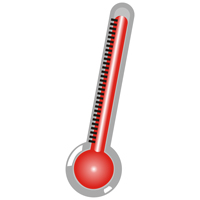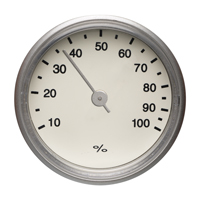
The road to a healthy indoor climate
Mechanical ventilation ensures a comfortable indoor climate in your home. With mechanical ventilation, the air in your home feels fresh all the time, and has a comfortable temperature. The purpose of ventilation is to remove the poor, humid air from your home and to replace it with fresh, temperate and filtered air.
Why should I ventilate my home?
There are many everyday activities that contribute to polluting the air in your home, including cleaning, cooking, laundry, exhalation and electrical appliances such as televisions and computers. New furniture, carpets and paint on the walls also give off many particles.

Besides particle emissions, the greatest danger to people and the building is damp. A family of two adults and two children produces around 10 litres of liquid a day, which needs to be ventilated out of the home. Modern buildings, which are well insulated, retain damp, so ventilation is important. This is because high humidity provides ideal conditions for dust mites and mould, which in the worst case can lead to rot. If there is more than 2 cm of condensation on your windows in the morning, this indicates that the humidity in your home is too high. A mechanical ventilation unit removes the damp from your home and ensures that the air inside is fresh and filtered, and that there is no condensation on the windows in the morning.
Let humid air out and the fresh air in
The relative humidity level, RH, in your home will vary over the year, as RH is primarily determined by the outside temperature. In the cold winter months, humidity of less than 40–45 % is desirable. However, it is also important to maintain a humidity of more than 20 %. Any lower and it can lead to the drying out of the mucous membranes, the feeling of dry skin, eye discomfort for wearers of contact lenses, and wood in the home can dry out and possibly crack. In the winter, the humidity should be below 45 %.
The Danish Asthma and Allergy Association recommend that homes are aired out for 3 x 5-10 minutes daily, with a through draught, all year round to expel damp and harmful particles. This is not necessary with mechanical ventilation. At the same time, you also save on heating bills, as the heated air does not disappear out the window in winter.
Your indoor climate is good when:
 |
The indoor temperature is +21°C. The Danish Building Research Institute recommends that all the rooms in the building are of a minimum temperature of 18°C. Temperatures lower than this may result in the formation of mould. |
 |
The relative humidity should be kept between 20–45 % in winter. Dust mites thrive at an RH of 60% or more, and at an RH of 75%, mould forms. |
 |
It is cheaper to heat a home with low humidity than one with high humidity. |


